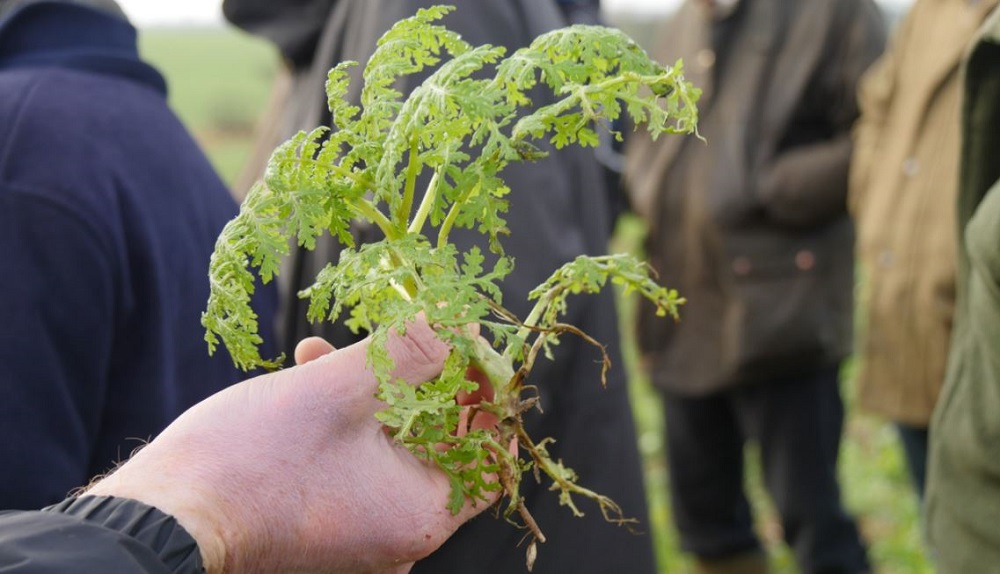How catch crops ‘mop up’ and release nitrogen explored at Strategic Cereal Farm
Wednesday, 15 December 2021
A trial at Strategic Cereal Farm West has investigated how catch crops capture and release nutrients. AHDB’s Richard Meredith discusses how a summer catch crop helped to lower nitrogen losses.
In autumn 2019, a wet autumn saw soil waterlogging. Like farms across the country, this left winter crops at Strategic Farm West unsown. However, it gave the opportunity for a summer catch-crop trial. Treatments included:
- A farm-saved barley and beans mix
- A commercial cover crop mix (phacelia and oil radish)
- Lightly cultivated stubble (the control)
The ‘weedy’ control provided 73% cover, while the cover crop mixes produced good, dense cover – with 93% coverage achieved with the barley and beans mix.
Catch and cover crops can capture or ‘mop up’ nitrogen in the soil. It can help reduce nitrogen mineralisation and the risk of leaching over the winter.
Nitrogen fixation from the atmosphere by the inclusion of a legume in the mix can also potentially help build soil fertility.
All treatments captured nitrogen, with the barley and beans mix having the highest nitrogen content.
To find out how the captured nitrogen might become available for the following crop, in terms of the autumn soil nitrogen supply, we used two measurements (with their results combined) in August.
- The soil mineral nitrogen (ammonium and nitrate) to a 90 cm depth
- The amount of nitrogen in the catch crop
There wasn’t a significant difference in the soil mineral nitrogen across the trial. The bulk of the differences in the soil nitrogen supply were due to the amount of nitrogen that the catch crop had captured. The beans and barley mix came out on top, with 130kg N/ha potentially available going into the autumn. The inclusion of a legume in this mix added additional nitrogen.
Improvements in cash-crop yields, following a single year of catch or cover crops, are not guaranteed. In February, when there was winter wheat growing on the trial site, we repeated the measurements carried out in August.
We found that the winter wheat crop had captured less nitrogen after the catch crop (compared to the control).
The control had 44 kg/ha soil nitrogen supply, which almost matched the soil mineral nitrogen that was present in August.
The same was true with the catch crop treatments – with close agreement between the February and August soil mineral nitrogen measurements.
So, the nitrogen from the catch crop had not been accounted for or ‘found’. The most likely explanation, given the trial site soil is not free draining, is that the nitrogen was locked up in the organic pool in the microbial biomass and in the organic undecomposed materials.
Summer catch crops can effectively capture nitrogen that otherwise may be lost from the system. However, some benefits are often only seen after a catch or cover crop has been repeatedly included in the rotation over the long term.
This blog is part of a series produced following Strategic Cereal Farm Week (winter 2021/22). Our Strategic Cereal Farms put cutting-edge research and innovation into practice on commercial farms around the UK. The week of online events featured the latest results, delivered by our farm hosts, industry experts and researchers.
 AHDB
AHDB
Topics:
Sectors:
Tags:

